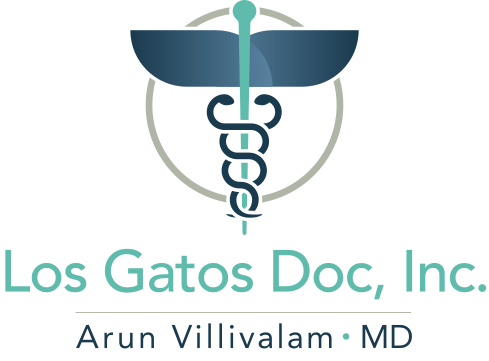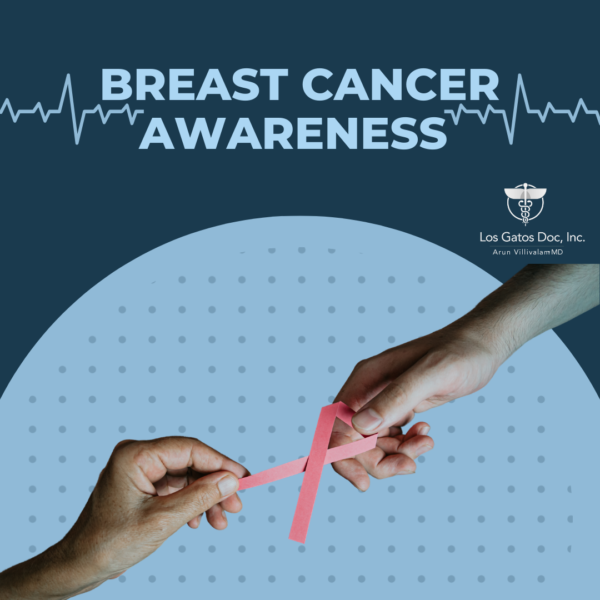In the midst of October, it is no secret that the color pink becomes a symbol of solidarity, awareness, and support for breast cancer – and those impacted by the disease. While “thinking pink” helps to attract attention and awareness to this important cause, it’s crucial to be sure we are looking beyond mere awareness alone. Breast cancer awareness month should serve as a call to action: regular screenings, understanding your risk, and the knowledge of how to conduct self exams leading the force. Once we master this, we will be in control of vital parts of our health – and awareness simply serves as a reminder.
At Los Gatos Doc, we believe that everyone should feel empowered with knowledge and a proactive approach to breast health. With about 1 in 8 women in the U.S. developing breast cancer at some point, early detection can make a life-changing difference.
Understanding Breast Cancer: Why Early Detection Matters
Due to the high numbers of impact in the U.S. there is a large chance that someone in your circle has dealt with breast cancer directly, or knows of someone close to them in their life who has suffered from the same. Breast cancer impacts both women and men across the globe. While the reach is far, when caught early there are a larger amount of effective treatment options which can increase overall survival rates. In fact, studies show that breast cancer detected in its early stages has a 99% survival rate over five years. This reality underscores the importance of routine exams, mammograms, and staying vigilant for any changes in breast health.
During the month of October, we acknowledge and honor those impacted by this disease, but also want to encourage everyone to make breast health a priority year-round. Awareness is a powerful tool, but action is the overall end game.
How to Conduct a Breast Self-Exam
One of the biggest messages throughout Breast Cancer Awareness Month is “early detection saves lives.” Taking control of your own health by participating in self-exams is a quick and straightforward way to familiarize yourself with your body and detect any changes early. Conducting a self-exam each month takes only a few minutes and offers peace of mind, plus it’s free and easy to incorporate into your routine. Here’s a comprehensive guide adapted from The Mayo Clinic to performing a breast self-exam:
- Stand and Inspect in Front of a Mirror
With shoulders relaxed and arms at your sides, observe your breasts in the mirror. Check for symmetry and size, keeping an eye out for any visual changes, such as skin puckering, redness, or visible lumps. Don’t worry if one breast appears slightly different in size than the other; asymmetry can be natural. What you’re looking for are new changes or irregularities. - Raise Your Arms
Lift both arms above your head and inspect for the same visual changes from a different angle. Pay special attention to any unusual shape or contouring that appears with movement. - Flex Chest Muscles with Hands-on-Hips
With hands on hips, press firmly to flex the chest muscles. This stance can reveal any dimpling or skin irregularities you might not have noticed with arms relaxed. - Feel in the Shower
Using one hand, feel the opposite breast with small, circular motions, covering all areas of the breast from top to bottom and side to side. Focus on the area under the armpit, where breast tissue extends, and apply varying pressure to detect any changes in texture or thickness. - Lie Down for a More Thorough Exam
When lying down, the breast tissue spreads evenly, making it easier to feel all parts of the breast. Place a pillow under your shoulder, and with the opposite hand, use circular motions to examine the breast and surrounding area. Apply light, medium, and firm pressure to cover the deeper layers of tissue. - Monitor for Changes and Follow Up
Look out for any unusual lumps, thickening, or texture that doesn’t seem normal. It’s natural to have some lumpiness, particularly for younger women or women with dense breast tissue, but anything new, persistent, or unusual warrants a call to your healthcare provider.
Beyond Self-Exams: Regular Screenings and Consultations
While self-exams should top your list as a valuable habit, they should walk hand-in-hand with a broader approach that includes professional screenings and annual mammograms alike. For women over the age of 40, or anyone with a family history of breast cancer, this screening option is critical for detecting tumors that might not be felt during a normal self-exam.
If you’re unsure about your risk factors, our team at Los Gatos Doc can help assess them and recommend a screening schedule based on your personal history. Breast health isn’t limited to a specific age or risk group; it’s a lifetime priority, and every individual deserves to feel supported and informed.
Book Your Women’s Health Appointment with Los Gatos Doc
Breast Cancer Awareness Month is a reminder of the importance of breast health, but it is also vital to think beyond the breast and of the woman as a whole. There are many factors that make up our healthiest lives, and with more common diseases approaching as we age, it is vital to schedule regular screenings and learn the ins and outs of our own bodies to take a proactive role in our well-being. Whether you need a women’s wellness checkup, a mammogram referral, or simply want to discuss your health questions, our compassionate team at Los Gatos Doc is here to guide you every step of the way.
Don’t wait for symptoms to appear—early detection saves lives, and routine screenings can provide reassurance. Contact Los Gatos Doc today to book your appointment and take the next step toward lifelong health.






